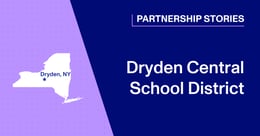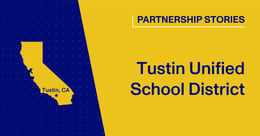
How Paper™ is driving student adoption and engagement with equity in mind
From the moment we launched Paper™, we knew we’d need to continuously evolve our product offering and refine our approach if we were to deliver on our promise to level the playing field for K-12 education.
Innovation is at the core of who we are, and throughout the last several school years, we’ve been working nonstop to increase student usage, drive engagement around our platform, and create better student outcomes.
Brown University’s Annenberg Institute recently released a working paper containing original research conducted with a Paper partner during the 2020-21 school year. Researchers used a randomized control trial to test the impact of different engagement strategies, to find out how to increase the number of students who used on-demand tutoring, and to explore what effect that tutoring had on academic outcomes.
As a data-driven organization, we’re motivated by this study’s findings and more determined than ever to work closely with our district partners to improve our virtual learning tools and how we work with students, teachers, and families.
So, what does the research say?
The paper has two main findings:
1. Student usage of opt-in virtual tutoring programs is significantly lower without proper communication and engagement efforts to drive awareness of the tool with community stakeholders, such as family members, teachers, and students. However, with increased investment in communications and awareness efforts, usage increases drastically.
2. Importantly, the study also points out that on-demand tutoring can deliver significantly positive results for participating students. The data show that using Paper’s tutoring service increases students’ GPAs—especially in math subjects. The study also shows that Paper has a positive effect on the number of students who pass all their classes.
The authors write:
“Our findings . . . show that using on-demand tutoring had a positive effect on students’ Spring 2021 academic outcomes, including the likelihood students pass all their courses (42.35-pp), the likelihood students receive no Fs (18.79-pp), students’ overall GPA (0.77-points), and students’ math GPA (1.32-points).”
We believe that giving all students 24/7 access to online tutoring across every subject has the potential to make a big impact on learning outcomes, and we’re always gathering more evidence to help us figure out what works best. We have several ongoing research partnerships with various districts this school year, and we expect to publish the findings from those studies in 2023.
Currently, we hold Every Student Succeeds Act (ESSA) Level III certification. This means that our learning platform has promising evidence to show it is effective at producing results and improving outcomes and it is supported by one or more well-designed and well-implemented correlational studies.
In addition to the evidence-based data we are currently gathering, we are motivated by the myriad of student success stories we have seen across the country. A few of the thousands of examples we have seen include:
-
Students from Sierra Madre Middle School in Pasadena, California, told Fox LA how Paper has helped them recover from unfinished learning.
-
An administrator and a student from Irvine Unified School District in California joined an EdSource panel to share their experiences with Paper.
-
Students and teachers from Clark County School District showed CBS News how Paper is helping their classrooms.
As the Annenberg study’s findings underscore, we know that more needs to be done to motivate students to take advantage of the support Paper provides. This is especially true for learners who really need a boost. We are continually finding new ways to get every student who needs help to access our platform.
With educational equity as our North Star, we work nonstop with our school district partners to spread the word about Paper to their students. We pay close attention to what the research says about outreach and communication. The Annenberg study noted that when parents and students were contacted, it was nearly 50% more likely learners would access opt-in tutoring, resulting in a 4% drop in course failures.
We are using these findings as motivation to continue our push to find the best ways to ensure students log in, love their experience, achieve positive outcomes, and keep returning to Paper.
What are we doing to drive student engagement?
At Paper, we never stand still. We’re always implementing new strategies to support our learners. It’s been more than a year since the data contained in the Annenberg paper was collected, and since then, our communication and engagement strategy has grown significantly.
Since the 2020-21 school year, when the Brown study took place, we’ve greatly expanded our outreach to administrators, teachers, students, and families. We learned to work closely with schools and onboard them by providing customizable resources and outreach strategies. The schools that know how to incorporate Paper into their existing program see greatly improved engagement numbers.
Today, Paper provides various tools, resources, events, communications materials, and engagement programs—in partnership with hundreds of school districts across the country—to get students and their families aware and involved.
Perhaps most importantly, Paper’s Educational Support System (ESS) constantly evolves to meet students’ needs. Here are a few things we’ve been working on to keep students engaged:
College and career support: To help today’s students figure out what comes next after graduation, we are focused on developing better career and college readiness programs for schools. Recent figures indicate that about 60% of students typically enroll in a college or university after graduating high school. Paper now offers micro-credentialing, cover letter and résumé review, and other tools for the other 40% of students who will go directly into career training or the workforce after high school. For college-bound students, we offer ACT®* and SAT®** prep and college essay reviews.
Paper Missions: Paper Missions build student confidence in mathematics and ELA by leveraging the best of math pedagogy and game design. Daily Missions give students a low-risk canvas on which to practice their skills.
Greater accessibility: We’re working on product enhancements that will make it easier than ever for all students, including those in earlier grades, to get support from Paper. This includes new features like Voice Typing and Voice Notes.
We know that what we have to offer makes a difference for students, and we’re going to keep working to make Paper’s ESS accessible, engaging, and effective for all learners.
*ACT, Inc. is the registered owner of the ACT trademark. Paper is not associated with or sponsored by ACT, Inc.
**SAT® is a trademark registered by the College Board, which is not affiliated with, and does not endorse, this website.
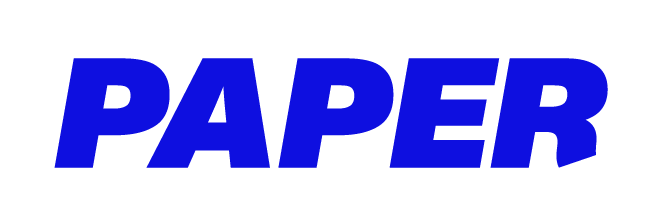
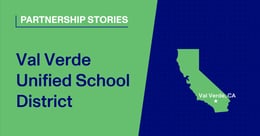
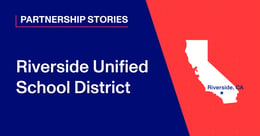
.jpg?width=260&height=136&name=Paper-News-Partnership-Santa-Barbara-USD%20(1).jpg)

